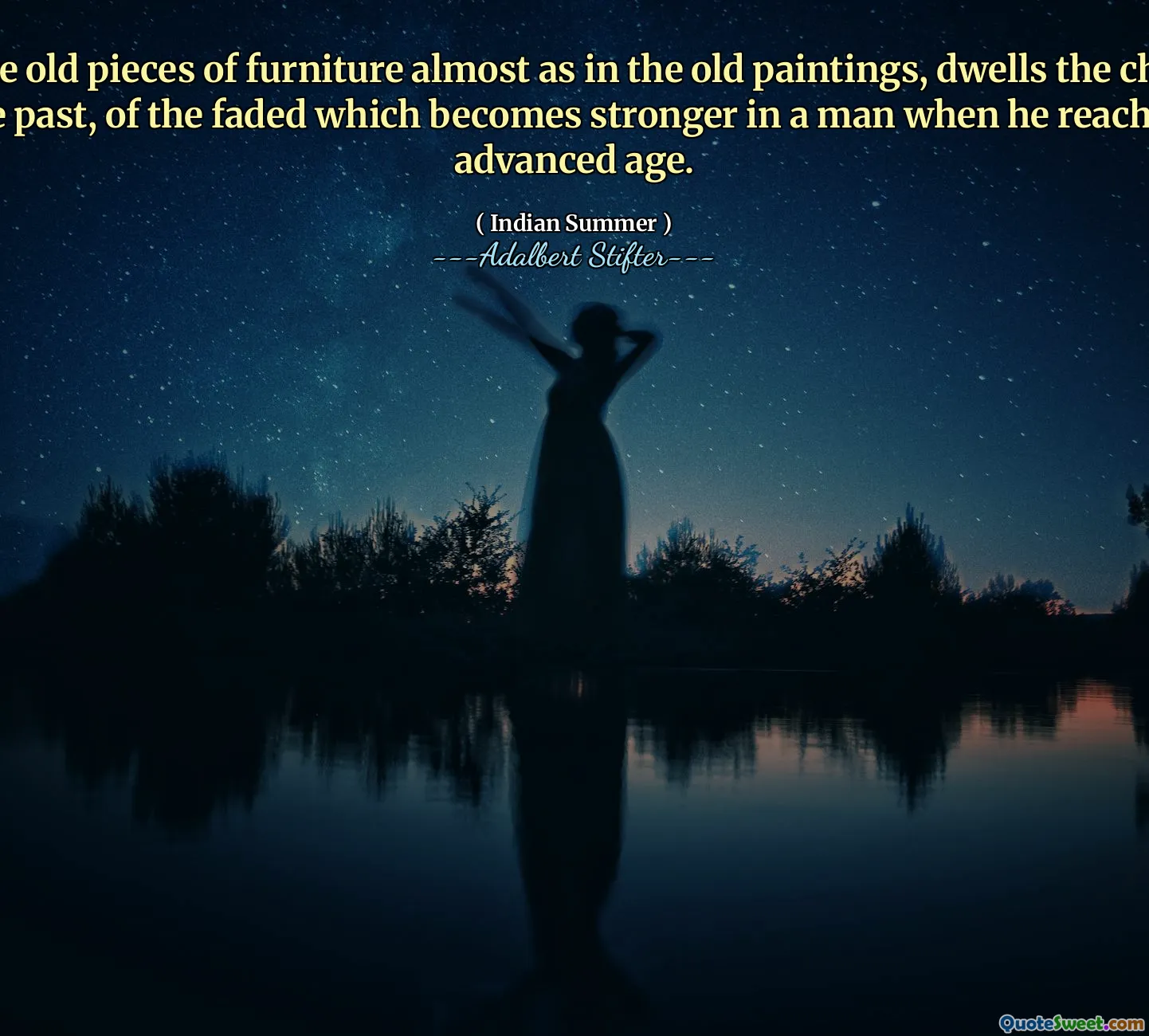
In the old pieces of furniture almost as in the old paintings, dwells the charm of the past, of the faded which becomes stronger in a man when he reaches an advanced age.
This quote exquisitely captures the subtleties of nostalgia and the deepening appreciation for the past as one grows older. The reference to old furniture and paintings highlights objects imbued with history and memory. These objects, whether a worn chair or a faded canvas, carry an innate charm not because of their physical perfection but because of the stories, the lives, and the experiences they silently contain.
It is interesting how the charm of the "faded" is emphasized—not just as a simple deterioration with time but as a quality that gains strength with aging. This is a beautiful metaphor for human life and perception; what might seem to lose value in youth is transformed into something precious as our experiences accumulate. Older individuals often gain a profound connection to history and the events of the past, recognizing in these faded possessions a mirror to their own journey and the transient nature of existence.
The quote speaks to a universal and intimate truth that many might overlook in a fast-paced, modern world focused on novelty and perfection. It invites reflection on how we value the old and the imperfect—not just as relics but as carriers of meaning and identity. This underscores an emotional maturity common in advanced age: an understanding that beauty and significance often lie not in superficial freshness but in endurance, memory, and the stories that time bestows upon objects and people.
In literature and philosophy, this sentiment parallels the idea that aging brings wisdom and a richer emotional texture. Objects that are "faded" symbolize these deeper layers of life, which can evoke comfort, continuity, and a sense of belonging. Therefore, this quote from Adalbert Stifter's "Indian Summer" invites us to cherish history, to find value in the worn and old, reminding us that with age comes a unique capacity to experience the past not merely as something lost but as something treasured.




